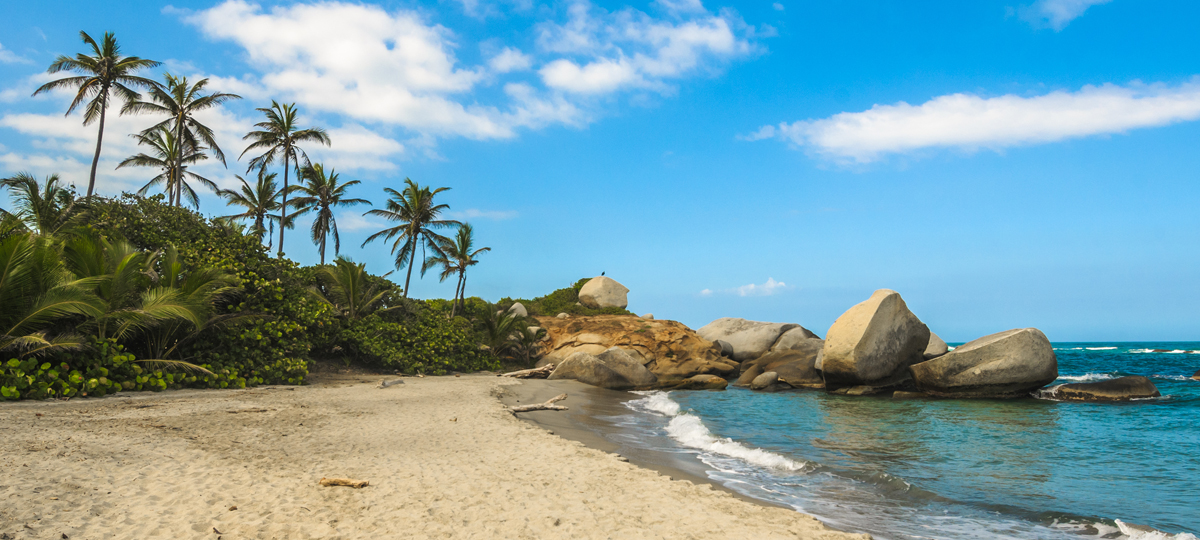COLOMBIA TRAVEL TIPS
Time Zone
Colombia is at GMT -5.
Language
The official language is Spanish.
Currency
Colombia's currency is the Colombian Peso. The legal tender notes are in bills and coins. You will find coins of 50, 100, 200, 500 and 1,000 pesos, and bills of 1,000, 2,000, 5,000, 10,000, 20,000, 50,000 and 100,000 pesos.
Money Matters
In the main tourist destinations in the country, you can pay your expenses in cash, debit, or credit cards. Credit cards can be used in all large stores and in some smaller ones. The most widely accepted are Visa and MasterCard over others, such as American Express and Diners Club. Before using your debit or credit cards in Colombia, check if your bank charges a commission for withdrawals abroad.
Travelers should bring some of their own currency and change it into pesos little by little. US dollars are not accepted officially, but there are such run-on dollars at the moment that many shopkeepers would be glad to take them. It is better for travelers to go to official currency exchange houses to get a fair exchange rate, sometimes it is more convenient to pay in cash. Not surprisingly, there's a thriving black market in currency exchange, mostly for US dollars. Avoid the black market - not only is it illegal, but you might end up with counterfeit pesos.
Tipping
Tips are voluntary, and although they may be suggested by restaurants and consumers will have to accept it, they may not exceed 10 percent of the total cost of the service provided. Additionally, the customer should be asked if he wants the tip included in the bill.
Gratuities for guides and drivers are not included unless otherwise stated.
Weather
Colombia's weather consists of dry seasons (December to January and July to August) and rainy seasons (April to May and October to November). But this does not mean that the weather in Colombia is the same. In fact, topographic diversity gives Colombia a great variety of landscapes, biodiversity, and thermal floors.
Bogota is located in the Andean zone of the country and has a cold and very dry climate. The rainiest days are concentrated in April and the least rainy in January. The dry season occurs in the months of January, February, July, August, and December and it is the best time to travel.
Medellin, the city with eternal spring, is characterized by a pleasant climate with mild temperatures and can be visited throughout the year. The best time for a trip to Medellin is during the relatively dry season, between December and February. Also, the month of July is a good time to travel.
Cartagena is a city that is located on the shores of the Caribbean Sea, its climate is tropical, hot, and humid all year round. The best season to travel to Cartagena varies during the year and depends on your interests. January is ideal to enjoy cultural events, such as the Cartagena Music Festival. If you are a beach and nature enthusiast, a great time to visit Cartagena is between the end of November and the end of April, a good period considering that the climate is drier and cooler, due to the sea breeze.
Barú is a peninsula, often called an island, which is surrounded by the bay of Cartagena, the Dique Canal, and the Caribbean Sea. Cartagena's climate is tropical, hot, and humid all year round. If you’re looking for the best time to visit Baru Island, the beginning of December and the end of April are the recommended tie periods, there are few rainy days and fewer crowds.
The Coffee Region has huge biodiversity thanks to the temperate weather in the Cauca River Valley to the cold paramo in the Nevado del Ruiz. In the mornings and nights, it is cold, but at noon it is sunny. We recommended visiting the Coffee Region between the months of June to September, and then from mid-December to mid-March, a season in which the rains are reduced to a minimum.
Health
Although there are no mandatory vaccines to enter Colombia, it is recommended to have your boosters up to date, including those for measles, rubella, yellow fever, hepatitis A and typhoid fever. We recommend malaria pills and repellent, which are only useful if you are going to visit jungle areas.
While safe in most major cities, it is best to avoid drinking tap water.
Always use sunscreen lotion even on cloudy days.
For up-to-date information on the latest health and vaccination recommendations, please contact your doctor.
Electricity
110 volts (110V AC, 60Hz).
Arrival and Departure Formalities
According to Colombian Immigration regulations, every foreign passenger entering the country must have a valid passport. Tourists can stay in the country for up to 90 days at most. Citizens of some countries in the Middle East, Eastern Europe, Arab countries, and Africa need to present a tourist visa. All visitors should refer to their closest Colombian Embassy to check which visas are required, although current visa requirements may be subject to change at any time.
Passengers can register all about their trip, 48 hours before the flight, in the Check-Mig tool to accelerate the migration control process, making the waiting time in the control filters much shorter. Check-Mig can be managed from the Colombian migration website.
Access the Check-Mig here: https://apps.migracioncolombia.gov.co/pre-registro/public/preregistro.jsf
Other Notes
Colombia is a safe country, although we would recommend taking the usual precautions such as not being showy with money and making use of the hotel safe for valuables wherever possible. Colombia, as with all countries in the world today, does have a criminal element, mostly pickpockets, etc, who can target tourists, so we recommend not to carry large sums of cash and to ask your hotel, or one of our representatives, where to go and where would not be recommended.




